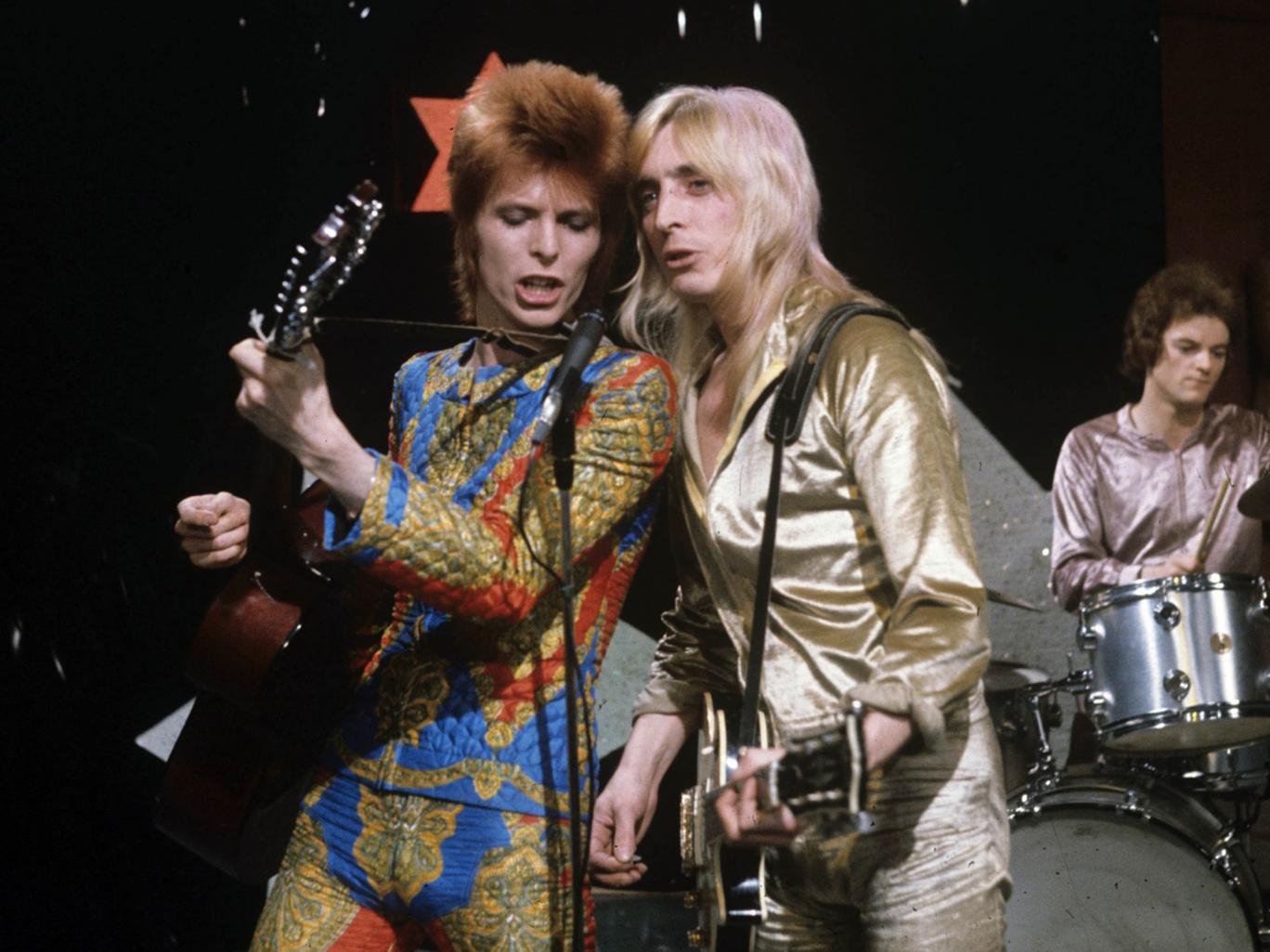It’s impossible to not be blown away by David Bowie. From the first moment one of his songs blasts into your ears, it’s like a transformed state. He demands your attention, pulling you into his musical world.
My favorite period in David Bowie’s long and illustrious career was the Berlin period, where Low, Heroes, and Lodger let Bowie get weird and show off his truly artistic side. But his most captivating, most transformative phase by far was Ziggy Stardust. From 1972 to 1974, it was impossible to look away from David Bowie. The Ziggy character, an alien who came to Earth on a wave of phase and became a rock star/sex machine felt real, ready to burst right out of the TV screen or or stereo.
Dressed in bright colors, bold outfits, and sporting bright electric red hair, Bowie looked unlike anything anyone had ever seen. He wasn’t psychedelic, he wasn’t pop art, he was something far out in a whole new way. He looked like he would’ve shown up on an episode of Star Trek just to rock Mr. Spock, sweep Uhura off her feet, and teach Captain Kirk that while space can be lonely, it can also be pretty groovy.
Bowie’s glam phase is his biggest, most recognizable phase, and for good reason. His four albums of the period, The Rise And Fall Of Ziggy Stardust And The Spiders From Mars, Aladdin Sane, Pin Ups, and Diamond Dogs, are all brilliant, inventive, provocative, and rocking in their own different ways. But Ziggy Stardust is the cream of the crop. It has sex, love, bisexuality, aliens, drugs, rock and roll stardom, and certain death. But more than any of David Bowie’s album, it yearns. With the rest of his albums from the glam period, Ziggy became a cocksure, prophetic rock star who had the world in the palm of his hand and a slowly building flock of freaks and weirdos who looked to him for their day in the sun where they could turn and face the strange.
But on Ziggy Stardust, neither David Bowie nor Ziggy Stardust was there. In 1972, Ziggy Stardust fell to Earth. He was completely aware of his power and the future to come, but at first all he could do was dream. He had to look out at the stars, see where he came from, set out to conquer Earth, looking fabulous the whole time. All he has is his love of love, and he has to find the rest. In “Starman,” Bowie matches the yearning of looking out to the stars and waiting for an alien the come down with a big, open chorus, embracing it with joy. By the time the album reaches “Ziggy Stardust” and “Suffragette City” roll around, Ziggy achieves his goal, becoming a leper messiah for the kids who clamored for a rock and roll savior. These two songs don’t have the yearning acoustic guitar strumming or soaring strings of the beginning of the album. It’s straight, balls-to-the-wall glam rock, with Mick Ronson’s electric guitar at full force. But then, once Ziggy is atop his throne, he brings himself to yearn, to dream, one more time, to call out to the huddled masses and tell them they’re not alone. As he tears himself apart onstage, he gives all of himself to the audience.
https://www.youtube.com/watch?v=_-G1Uy0OkCw
Bowie’s other glam albums are great, but they don’t yearn. It’s fine that they didn’t but that yearning, that desire for love and something beyond, was part of what got me hooked on Bowie. It got me hooked on “Five Years,” “Soul Love,” “Starman,” “Rock ‘N’ Roll Suicide,” and many other of David Bowie’s songs, regardless of what album.
But my favorite song on Ziggy Stardust, as well as one of my favorite songs of Bowie’s whole career, has to be “Lady Stardust.” More than any song on Ziggy Stardust, it feels so eternal. It feels graceful and romantic. There’s something beautiful about it, but it also feels somehow tragic. Mick Ronson’s guitar is notably absent, with Ronson instead playing piano.
“Lady Stardust” is one of those songs that makes you want to fall in love. It shows David Bowie, as well as Ziggy Stardust, staring out and yearning. If there’s any song that I’d like to crystalize the magic feeling of listening to David Bowie in, it would be this one.

